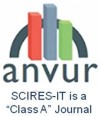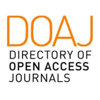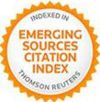Some reconstruction hypotheses of Leonardo’s project for the tiburio of the Milan cathedral by using 3D digital models 
Abstract
This paper analyses possible interpretations of the unbuilt Leonardo's project for the tiburio of the Milan cathedral, depicted in two sheets of the Codex Atlanticus, using digital tools, mainly 3D modelling techniques. Starting from existing studies and hypothetical reconstructions of Leonardo’s project, exploiting only analogue methods (i.e. 2D drawing techniques), new in-depth analyses are presented. In detail the use of 3D modelling allows a systematic analysis of the possible solutions for the ability to easily reconstruct the plan of each solution investigated starting from the section represented by Leonardo in the Codex Atlanticus. Results lead to multiple interpretative solutions of this complex architecture.
Keywords
Full Text:
PDFDOI: http://dx.doi.org/10.2423/i22394303v10n1p53
References
Apollonio, F.I. (2016). Classification Schemes for Visualization of Uncertainty in Digital Hypothetical Reconstruction. In S. Münster, M. Pfarr-Harfst, P. Kuroczyński, M. Ioannides (Eds.), 3D Research Challenges in Cultural Heritage II (pp. 173-197). Cham, Switzerland: Springer International Publishing. https://doi.org/10.1007/978-3-319-47647-6_9
Apollonio, F.I., Gaiani, M., & Sun, Z. (2013). 3D modeling and data enrichment in digital reconstruction of architectural heritage. International Archives of the Photogrammetry, Remote Sensing and Spatial Information Sciences, XL-5/W2, 43-48. https://doi.org/10.5194/isprsarchives-XL-5-W2-43-2013
Bartoli, M.T. (1978). Orthographia, Ichnographia, Scaenographia. Studi e documenti di Architettura, 8, 197-208.
Beltrami, L. (1903). Leonardo da Vinci negli studi per il tiburio della cattedrale di Milano. Milano, Italy.
Brivio, E. (2005). Il Duomo di Milano e la sua fabbrica: ieri, oggi e domani. La Casana, 47, 22-31.
Curcio, G., & Manieri Elia, M. (1982). Storia e uso dei modelli architettonici. Roma-Bari, Italy: Laterza.
Dezzi Bardeschi, C. (Ed.). (2017). Abbeceddario Minimo. Cento voci per il restauro. Firenze, Italy: Altralinea.
Fergusson, F. D. (1977). Leonardo da Vinci and the Tiburio of Milan Cathedral. Architettura, VII, 175-192.
Ferrari da Passano, C. (1973). Storia della veneranda fabbrica. In Il Duomo di Milano. Milano, Italy: Cassa di risparmio delle provincie lombarde.
Firpo, L. (Ed.). (1963). Leonardo architetto e urbanista. Torino, Italy: UTET.
Frommel, C.L. (2018). L’architettura del santuario e del palazzo apostolico di Loreto da Paolo II a Paolo III. Loreto, Italy: Edizioni Tecnostampa.
Frommel, S. (2019). Leonardo da Vinci: Architektur und Erfindungen. Stuttgart, Germany: Belser.
Frommel, S., & Guillaume, J. (2019). Leonardo e l’architettura. Modena, Italy: Panini.
Frommel, S., Gaiani, M., & Garagnani, S. (2018). Progettare e costruire durante il Rinascimento. Un metodo per lo studio di Giuliano da Sangallo. Disegnare Idee Immagini, 56, 20-31.
Galluzzi, P. (Ed.). (1987). Léonard de Vinci ingénieur et architecte. Montréal, Canada: Musée des beaux-arts de Montréal.
Giordano, L. (1998). Milano e l’Italia nord-occidentale. In F.P. Fiore (Ed.). Storia dell’architettura italiana. Il Quattrocento (pp. 166-199). Milano, Italy: Electa.
Guillaume, J. (1987). Le tiburio de la cathédrale de Milan. In P. Galluzzi (Ed.), Léonard de Vinci ingénieur et architecte (pp. 209-223). Montréal, Canada: Musée des beaux-arts de Montréal.
Lancaster, L. (2015). Innovative Vaulting in the Architecture of the Roman Empire: 1st to 4th Centuries CE. Cambridge, MA, USA: Cambridge University Press.
Maltese, C. (1975). Gusto e metodo scientifico nel pensiero architettonico di Leonardo. Firenze, Italy: Giunti Barbèra.
Marani, P. (1982). Leonardo, Francesco di Giorgio e il tiburio del Duomo di Milano. Arte Lombarda, 62(2), 81-92.
Marinoni, A. (Ed.) (2006). Leonardo da Vinci. Il Codice Atlantico. Firenze, Italy: la Repubblica - Giunti - Il Sole 24 ore.
Panofsky, E. (1978). Sinn und Deutung in der bildenden Kunst. Köln, Germany: DuMont. German edition of: Panofsky, E. (1957). Meaning in the Visual Arts. New York, NY, USA: Doubleday Anchor Books.
Pedretti, C. (1978). Leonardo architetto. Milano, Italy: Electa.
Sebregondi, G.C., & Schofield, R. (2016). First Principles: Gabriele Stornaloco and Milan Cathedral. Architectural history, 59, 63–122. https://doi.org/10.1017/arh.2016.3
Sebregondi, G.C., Gritti, J., Repishti, F., & Schofield, R. (2019). Ad Triangulum. Il Duomo di Milano e il suo tiburio. Milano, Italy: Il Poligrafo.
Steadman, P. (1989). Modelling Leonardo’s Ideas by Computer. In M. Kemp, & J. Roberts (Eds.), Leonardo da Vinci (pp. 209-217). New Haven, CT, USA: Yale University Press.
Article Metrics
Metrics powered by PLOS ALM
Refbacks
- There are currently no refbacks.
Copyright (c) 2020 Fabrizio Ivan Apollonio

This work is licensed under a Creative Commons Attribution-NonCommercial-NoDerivatives 4.0 International License.
SCIRES-IT, e-ISSN 2239-4303
Journal founded by Virginia Valzano





